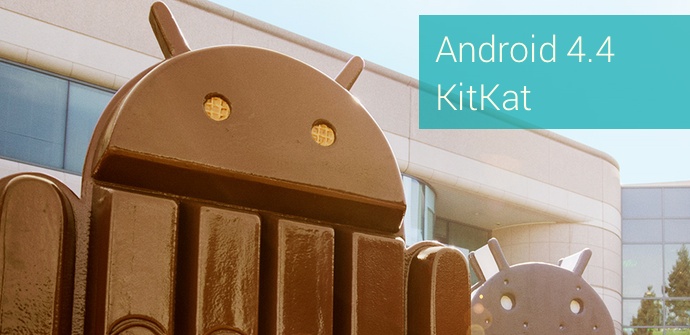
Android 4.4 KitKat has been launched without much repercussion, the launch of the new version having been overshadowed by the first smartphone to be launched and that will carry it, the Nexus 5. And this has made us miss some details about this update that , a priori, it does not seem very important. A very remarkable feature of Android 4.4 KitKat is, for example, Project Svelte.
And what is Project Svelte? If you are one of those who have an Android that is a couple of years old, or you have an entry-level smartphone, it is likely that you know perfectly what happens to it in certain cases. For example, when we restart the smartphone, it connects to the Internet and begins to download updates one after another, practically blocking the mobile, since it is consuming almost all the resources it has. And if on top of that we have one of those mobiles with only 512 MB of RAM, then what will happen is that either it will go very slow when we try to change applications, or it closes the applications alone very frequently. Well, Project Svelte, which comes integrated into Android 4.4 KitKat, tries to solve these problems in the new entry-level smartphones.
What Google has done is reduce the number of processes that are running normally on Android, which includes even Chrome, YouTube, and the rest of Google applications, now we hope that manufacturers avoid filling mobile phones with applications that they are always running. On the other hand, a new function is also introduced for developers that allows data to be obtained from the free RAM that exists at a certain time so that the application runs in the relevant way.
Finally, and focusing on what we mentioned in the previous paragraphs, we will avoid the bottlenecks that occur when it comes to executing a series of processes at the same time, consuming all available resources, as happened with updates. Now priority will be given to the user being able to use the smartphone normally. All with the main objective that devices with only 512 MB of RAM work correctly.
This will provide three significant improvements going forward. On the one hand, devices such as Google Glass or smart watches will be able to run Android without problems even if they only have a RAM of 512 MB. On the other hand, the same entry-level smartphones will no longer be useless gadgets after a few months. And finally, the old basic-range smartphones, although they probably will not update to the new version, will be able to opt for the versions released by the community in which this version is adapted to the different smartphones, something that could give it another year or two. life to a mobile that was already on the verge of becoming obsolete.
We can consider the samsung galaxy ace obsolete then
hahaha I think yes friend, I have it, and I'm about to buy the nexus 5
Will this version of Android be for my LG Optimus L9 for example? Greetings and thanks in advance